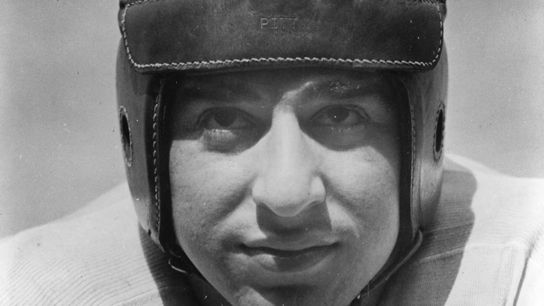We are officially within two months of the renewal of the Backyard Brawl, with the 106th meeting between Pitt and West Virginia kicking off at 7:30 p.m. Sept. 16 under the lights of Milan Puskar Stadium in Morgantown, W. Va.
In light of the countdown to one of college football's best rivalries coming back to life in 2022 with the infamous "Pitt Six" by hometown hero M.J. Devonshire, the Backyard Brawl has traditionally featured the best players spreading from the University of Pittsburgh's backyards to football programs across the nation.
That includes down I-79 southbound, where several players have jumped to the north to don the Panthers' royal and gold over West Virginia's blue and gold.
Here are the top five players who have made the jump from growing up in West Virginia to suiting up and excelling in their careers at Pitt:
(A quick shout out to Brett Ludwiczak over at Land-Grant Holy land on SB Nation for the inspiration. On Thursday, he took a look at the best Michigan natives to come down to Ohio and suit up for Ohio State over the last 20 years, and I decided to take a crack at it from a Pitt perspective.)
5. ED MATESIC
Quarterback/Running back/Defensive back
After he led Pitt in interceptions in the 1931 season, the Wheeling, W. Va., native went on to play three professional seasons for the Philadelphia Eagles (1934-'35) and the Pittsburgh Pirates (1936). He rushed for 377 yards and a touchdown while throwing for 1,412 yards and eight touchdowns in those pro seasons.
4. TYRONE GILLIARD
Safety
For two seasons, the Princeton, W. Va., native was a staple of Walt Harris' defenses, including the 2004 one which ended the regular season with an Associated Press ranking of No. 19 and earned a berth to the Fiesta Bowl on New Year's Day in 2005 with Aliquippa star and future Pro Football Hall of Famer Darrelle Revis playing alongside him.
Gilliard played in 25 games for the Panthers over those two seasons and pulled in just two interceptions, but was able to help guide the Panthers to a 16-13 win over the Mountaineers on Nov. 26, 2004, as the Mountaineers turned the ball over on downs on the Pitt 32-yard line with 55 seconds remaining on their final offensive possession.
3. JOHN REGER
Linebacker/Guard
Perhaps more known for his 12-year NFL career, Reger starred at Pitt in the early-1950s after growing up in Wheeling and was known for his two-way capabilities as an offensive guard and a linebacker.
Reger played for the Steelers for nine of his 12 professional seasons after going undrafted out of Pitt. He was selected to the Pro Bowl in each season from 1959-'61 as a Steeler. Over the course of his NFL career, he intercepted 15 passes and recovered 20 fumbles. He spent the final three seasons of his pro career playing for Washington.
2. GIBBY WELCH
Running back
Still one of the greatest running backs to grace the fields of Pittsburgh, the Parkersburg, W. Va., native helped put Pitt football on the map under Jock Sutherland in the mid-1920s, including by playing in the first game held inside Pitt Stadium.
Welch played three football seasons and ran track for three years at Pitt. In track, he was one of the best discus throwers in the nation and also participated in broad jump, shot put, and javelin.
As a senior, he was the captain of the football and track teams and though he was a star on the track, he became a household name in football. In 1927 he was selected as a Unanimous All-American, and he led Pitt to its first bowl appearance in the 1928 Rose Bowl against Stanford, but was held to 50 yards in the Panthers' 7-6 defeat.
1. MARSHALL GOLDBERG
Running back
Goldberg was Tony Dorsett before there was a Tony Dorsett.
The Elkins, W. Va., native was a two-time Consensus All-American for Pitt in 1937 and 1938 and was inducted into the College Football Hall of Fame in 1958. He led Pitt to back-to-back national titles in 1936, finished third in Heisman Trophy voting in 1937, and was the Heisman runner-up in 1938. By the end of his playing career, he had tallied 1,957 rushing yards to hold the school record until Dorsett broke it in 1974.
Goldberg translated his successes in college into the pros. His jersey number 99 is retired by the Cardinals, after he spent eight prolific seasons playing for the then-Chicago Cardinals from 1939-'42 and 1946-'48, with a stint as a Navy Seal in World War II sandwiched in between. He was a six-time All-Pro and secured the clinching interception that gave the Cardinals their only NFL championship in 1947.
His jersey No. 42 was retired by Pitt in 1997, and he was inducted into the Pitt Athletics Hall of Fame in 2018.


